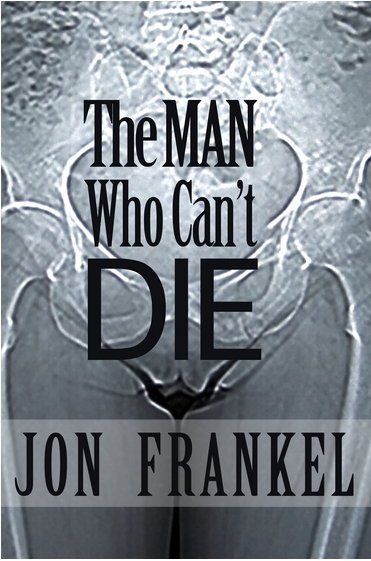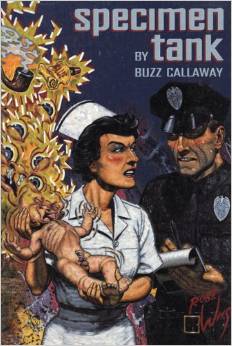VALIS
For years friend urged me to read Philip K. Dick. They compared my work to his. And the book they wanted me to read was Valis. Not the Valis trilogy, as it has become known. But I ignored that advice, of course, and when I finally settled down to reading him, I began with a typically flawed 1970s book Flow My Tears the Policeman Said, given to me by Cara Hoffman. Undeterred I amassed an arsenal of Philip K. Dick paperbacks, buying the beat up, yellowed reprints whenever possible, avoiding the Vintage reissues. And I read them, floating around the late fifties to mid-sixties. It wasn’t until this year that I finally sat down to read the Valis trilogy: Valis, The Divine Invasion, and The Transmigration of Timothy Archer. It is easy to see why these books made him a popular author. But any idea that they are in some way radically different from what came before is wrong. They were not written to be a trilogy, though they narrate in different ways the same event, Philip K. Dick’s encounter with a new reality, or descent into madness. He never made up his mind about it, and the reader won’t either. It doesn’t matter. These books are the summation of all he did, and reflect the various types of books he wrote over and over, including the contemporary books he wrote but was never able to publish. I read these books a while ago so the ‘review’  that follows will be necessarily sketchy and is only intended to give readers an idea of what the books are about and why they are worth reading.
PKD’s work suffered from the industry he was in. He had few editors in his career and he wrote to pay the bills. He took large amounts of amphetamines and wrote books in a matter of weeks. By the late 60’s he was coming apart. In 1974 he had the experience of a pink beam of light illuminating his mind. We might think of this as the final onset of schizophrenia, but he experienced it as a redemptive revelation, and the nature of the revelation became the subject of his work. The Valis Trilogy explores this crisis. Each of the three books is unique and yet each forms the side of a triangle or surface of a pyramid.
Valis (VALIS: Vast Active Living Intelligence System) is a crap artist’s final confession. A crap artist, according to Dick, is a person who collects crackpot theories. (see his wonderful, posthumously published contemporary novel Confessions of a Crap Artist for a full exploration). And Valis, superficially at least, is about the apotheosis of crackpot ideas. It is also deeply versed in German philosophy, psychoanalytic theory and the occult. Dick has always been a crap artist indeed, but as all crap artists recognize, the line between nonsense and spiritual wisdom is hard, if not impossible, to draw. Yeats famously said of Madame Blavatsky (and I paraphrase), ‘Of course she’s a fraud, how else is a psychic to make a living?’ Yeats is stood on his head by Dick, who writes that we are not a living soul tied to a dying animal, but a dying soul tied to a living animal. And in that there is much Schopenhauer. And there is much of Yeats’ ‘A Vision’ here (Yeats, like Joyce, was a renown and great crap artist), and Blake’s myth. But this is all Dick territory, going back to his early writing. What’s remarkable about Valis is how clear it is. And how poignantly, and starkly, he poses his usual questions about madness and sanity, about the noumenal versus phenomenal, and of course our ontological status and all of the attendant epistemological questions that arise. It is also an amusing, if not hilarious, book about California, and a famous science fiction writer’s drift into madness.
Late interviews with Dick reveal little space between the fiction and the man. It is impossible to tell if he is playing with his audience or sincere, or most likely, both. It is taken for granted that a madman can’t play at sanity, or be reflexive about his madness. That is not necessarily more than a truism. There are many forms of madness, and PKD spent a life writing about, experiencing, and toying with the mad mind.
Valis begins with a suicide and the death by cancer of two women a man named Horselover Fat is involved with. Horselover Fat has had a mystical experience. A pink light has entered his mind through a third eye in his forehead. Early in the book there is a first person narrative intrusion: Phil Dick informs the reader that he and Horselover Fat are the same person, split. There are further splits. Two friends of Phil/Horselover are fellow travelers. The first part of the book is a melodrama concerning the death of the two women and a lot of discussion and exploration of Horselover’s mad ideas. Horselover does not know if he is sane or not, but he advances theory after theory to explain his visions, which involve ultimately a Gnostic false creation. Eventually he sees an underground movie that seems to confirm his experience. He and his friends seek out the filmmakers. In their compound they have a two year old child, a divine child who reveals to Fat the true cosmogony and future of the universe.
Valis is a post-modern novel with a contemporary LA setting. It is a metanovel, a low budget, post-modern self-reflexive narrative. Low budget is key, but it has not got the slapdash, cartoony exuberance of his early work, nor the primitive sentences. PKD has slowed down and written a clear narrative about a schizophrenic break that is actually the revelation of a divine order and drama that has been concealed from humanity by a demiurge’s creation of minds that cannot conceive of or perceive the truth.
THE VIRGIN MARY HAD STRETCH MARKS
The second book, The Divine Invasion, is a science fiction work and takes place mostly in the mind of a half-dead man, experiencing life unaware of his actual situation, as in Ubik. The Divine Invasion is much more religious. VALIS exists in this world, but now we have an explicitly Christian allegory: Rybys, a virgin, is impregnated by Yah, the God of a planet in the star system CY30)-CY30B. What follows is a theological drama, a reenactment of the birth of Christ in a future world with domes on moons of frozen ammonia. It is classic Dick sci fi, with wonky stereo systems, rival rulers of a planet earth full of hovercraft, political paranoia, a hapless boob in love with a woman, and god children. Narrated clearly in the third person, it tells the Valis story over, in the voice of early 1960s PKD . Gone are the philosophical explanations. It is hilarious, surreal, and a total affront to good taste and reason.
BACK TO BERKELEY
The Transmigration of Timothy Archer is the most conventional of the three books. In it PKD achieves something he was after his whole life: a successful, serious, interesting, mostly controlled contemporary novel. It is a first person narrative, told by a woman named Angel who is married to the mentally ill son of the Episcopal Bishop of California, Timothy Archer. It is a distinctly California tale of crossed love, drugs and obsession, and is based on PKD’s friendship with the actual Episcopal Bishop of California James Pike. Archer lives with Kirsten, a Swedish feminist antagonist who becomes first his assistant and then his lover. Kirsten has a schizophrenic son….Archer, an avid leftist, pro gay rights, civil rights era hero, with a staggeringly large intellect and ego, has a crisis of faith. He is engaged in theological battle with his church and with Christianity. He believes he has discovered texts that reveal the non-divinity of Jesus. When his son kills himself Archer is launched into despair and begins to communicate with spirits. Again the difference between theological truth and madness is explored. What’s unusual here is Angel. She is a typical Dick protagonist in many ways except for her gender. She is skeptical about all of the New Age nuttiness around her but on some level wants to believe. The books is sad, calm and brilliantly rounds off the preceding volumes with a little sleep.
Â
Â




